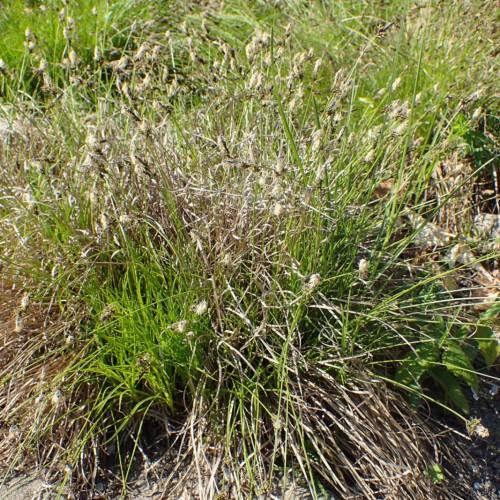
Rocky Mountain Sedge
Carex saximontana
Watering:
Average
Hardiness Zone:
Flowers:
Flowers
Sun:
full sun
Soil:
Sand
Leaf:
Yes
Growth Rate:
Low
Drought Tolerant:
Yes
Salt Tolerant:
Yes
Care Level:
Medium
watering
Russet Sedge should be watered once or twice weekly, depending on the season. During the warm summer months, water plants every 4 to 5 days to ensure that the soil does not dry out completely. Over-watering should be avoided, as this can cause root rot. During the cooler months, water every 10 to 14 days while allowing the top layer of soil to dry out between watering. Provide additional moisture when the temperature and humidity are low or when the plant's leaves become wilted. It is best to water Russet Sedge near the base of the plant to avoid causing fungal or bacterial diseases.
sunlight
Russet Sedge (Carex saxatilis) prefers full sun for best growth and flowering. It should receive at least 6 hours of direct sunlight per day. It is important to note that, as with most plants, too much direct sun can be detrimental to this plant. To prevent the leaves from scorching, it is best to provide some afternoon shade. When planted in an area with full sun, ensure adequate soil moisture so the plant can withstand the full intensity of the sun. Also, avoid planting in areas with reflected light, such as near surfaces that could reflect heat and sunlight during the hottest part of the day.
pruning
Russet Sedge (Carex saxatilis) should be pruned in late winter or early spring. This can be done by trimming the plant down to 4 inches from the ground, cutting back any dead foliage, and removing any damaged or dead foliage. This will help to encourage new growth and healthier plant growth. It is important to avoid cutting into the crown of the plant with pruning shears, as it may damage the plant’s structure. Pruning once a year is generally sufficient, but in areas of heavy snow, more frequent pruning may be necessary.
